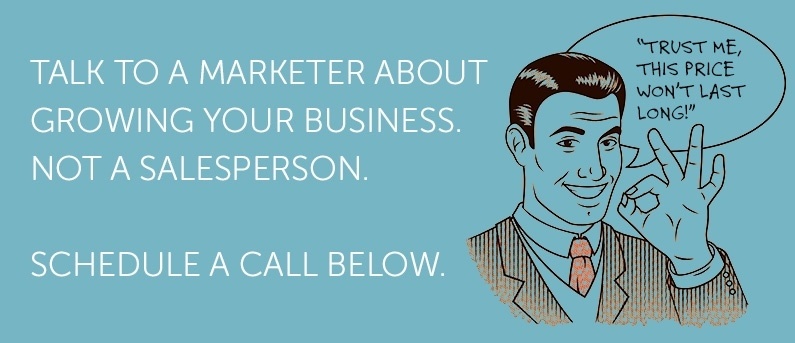
It’s a digital universe out there. Almost every search for a product or service, whether it’s B2C or B2B, begins with a search engine. Nearly 95% of customers in the B2B market use the internet for research when purchasing a product and 90% go online to find a potential supplier.
Those are illuminating statistics. If more than nine out of ten B2B customers use the internet to find what they need, that tells you where you can find your customers. By using digital marketing, you can help your customers find you.
Digital marketing is essential for the modern business to thrive. It increases your market reach, attracts and retains customers, and increases the average sale to existing customers far better than traditional marketing methods. And while the manufacturing industry does not spend a large percentage of the budget on marketing, digital marketing can do a lot more with the eight percent it does spend.
Audience Reach
Digital marketing economically expands your audience reach and allows you to measure the ROI of your marketing efforts.
- Traditional marketing audience reach is limited to those who receive phone calls and marketing materials from your sales staff or through the postal service.
- Those materials are ineffective in creating two-way engagement with your target customers.
- Traditional marketing is all about finding your customers and marketing to them where they live, whether they are looking for your product or not.
- Digital marketing helps your customers find you so you can market to them when they are ready to buy.
- Digital content can be distributed and promoted via paid (like pay-per-click) and unpaid (social media and SEO) methods to reach thousands more with lower costs.
With digital marketing, your marketing platform includes more than your website. You also engage on social media and through email, broadening your reach exponentially. Another digital advantage is your ability to change your message quickly, customizing your materials to attract the attention of the exact people who need to see it.
Without digital marketing, you cannot take advantage of the increasing mobility of your audience.
Inside your own facilities, you may notice that smartphones and tablets are becoming the device of choice for engineers, operations managers, and others who spend more of their day in their car and on their feet than at their desktop PC.
How are they most likely to access the internet at any given moment? They use a mobile device. As younger employees enter your workforce, you will have more staff accustomed to conducting business online. Digital marketing leverages that tendency for your gain.
Content Creation Provides the Flesh for Your Digital Framework
Beyond building a platform for marketing, you need to create content to put on that platform. What is content? It’s anything you produce that engages, educates, and builds trust with your target market.
- Audio-visual content like live streaming, videos, podcasts, and webinars.
- Text-based content like articles, blog posts, and ebooks.
- Images from photos and charts to infographics and GIFs.
One piece of digital content can be used on multiple outlets across your platform. You can repackage it, resize it, and change it to fit a variety of promotional vehicles including social media posts, email campaigns, downloads, presentations, and sales collateral.
For example, an ebook can be provided as a download in an email campaign or through a regular newsletter. It can be split into multiple blog posts or articles. Those blog posts and articles, as well as the ebook, can be promoted on social media, not just once but numerous times.
The flexibility of content makes it ideal for sales processes that must appeal to multiple roles within the target audience. If you have a complex sales cycle that includes a variety of stakeholders with different agendas, content marketing is the only way to provide the right information at the right time to the right people at each part of the journey.
Content creation is also ideal for providing complex information to your audience. The most important type of content to the manufacturing target audience is technical information. Digital marketing offers multiple methods of presenting technical information to showcase each benefit of your product or service.
Creating new content consistently also provides SEO value, making it easier for prospects to find you online. You grow more inbound leads at a lower cost per lead than you can with traditional lead generation materials.
You Can Measure Digital Marketing ROI
The bane of traditional marketing has always been the inability to measure its return on investment. When you mass-mail a thousand postcards, how do you determine whether they generated enough business to cover the cost of development, printing, and distribution?
Digital marketing, by its very nature, can be measured easily using a variety of performance tools. Each customer interaction can be analyzed to determine the performance of the marketing piece and to improve its next iteration. As a manufacturer, you are accustomed to working with key performance indicators (KPIs) like asset utilization, avoided cost, and maintenance cost per unit.
There are numerous KPIs for digital marketing, including:
- Leads generated
- Sales closed
- Average deal size
- Value of sales lost
- Average revenue per product
- Customer loyalty and satisfaction
Digital content can be tracked and used to nurture leads through the marketing and sales funnel to the point when they are ready to talk to you.
Even better, digital marketing lends itself to digital implementation and operation. You can integrate marketing and sales performance measurements into your enterprise resource planning (ERP) solution or your customer relationship management (CRM) software.
Digital marketing has surpassed traditional marketing in every way that counts. You expand your marketing reach while targeting a narrower audience. Your marketing is more effective and economical. And you can measure how everything is performing with the ability to change what doesn’t work quickly.
You also gain a broad and deep understanding of your core audience by measuring your content’s performance while learning the best way to improve it for your next round of content.




